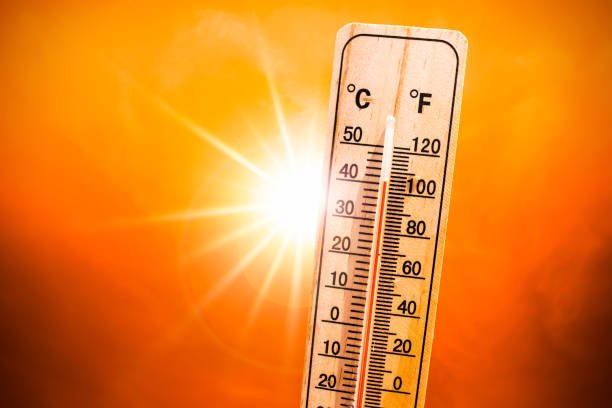Blog
Achieving Excellence in Goalkeeping: A Detailed Look at the Keeper Standards Test

In the world of football (soccer), the role of the goalkeeper is one of the most demanding and specialized on the field. While the other players must be skilled in attacking and defending, the goalkeeper stands as the last line of defense, responsible for ensuring the ball doesn’t find its way into the back of the net. With the importance of this role, there has emerged a standard to measure a keeper’s abilities—the Keeper Standards Test.
The Keeper Standards Test is a rigorous evaluation that measures various skills and attributes that a goalkeeper must possess. From agility and reaction time to decision-making and distribution, the test assesses the core competencies that separate an average keeper from an exceptional one. Whether you’re an aspiring young goalkeeper looking to break into the professional ranks or a seasoned player seeking to refine your skills, understanding and excelling in this test is crucial.
This article will explore the different facets of the Keeper Standards Test, covering what it entails, how it is structured, and why it is becoming the benchmark for goalkeeper development. We’ll also look at how to prepare for this test, avoid common mistakes, and set yourself up for success.
The Importance of Goalkeeper-Specific Testing
While outfield players are often evaluated on passing, shooting, and movement, goalkeepers require a more tailored evaluation process. The nature of their role calls for quick reflexes, excellent positioning, and the ability to read the game. These requirements are very different from the rest of the team, which is why goalkeeper-specific testing like the Keeper Standards Test exists.
The Keeper Standards Test allows coaches and trainers to see how well a keeper can perform under various scenarios, including high-pressure situations. It also provides valuable data on the keeper’s strengths and areas for improvement, offering a comprehensive picture of their capabilities.
Key Areas Assessed in the Keeper Standards Test
The Keeper Standards Test focuses on various skill sets that are crucial to a goalkeeper’s success. These include:
1. Reaction Time and Reflexes
One of the most important aspects of goalkeeping is the ability to react quickly. Whether it’s a close-range shot or a sudden deflection, a goalkeeper’s reflexes often make the difference between conceding and making a crucial save. In the test, this is typically assessed through rapid-fire drills where the goalkeeper has to react to multiple shots in quick succession.
2. Shot-Stopping Ability
A goalkeeper’s primary responsibility is to stop the ball from entering the goal. Shot-stopping drills form a significant part of the Keeper Standards Test, evaluating how well the keeper can block both powerful and precise shots. This can involve long-range efforts, close-range shots, and one-on-one situations where decision-making is key.
3. Positioning and Footwork
Good positioning is essential for a goalkeeper, as it allows them to cover the goal efficiently and react to threats. The test assesses how well the goalkeeper positions themselves relative to the ball, their defenders, and the opposition. Proper footwork is also critical as it enables a keeper to move swiftly across the goal line.
4. Aerial Ability
Goalkeepers are often called upon to claim crosses or deal with aerial balls. This aspect of the test measures how well a keeper can judge the flight of the ball, command their area, and make clean catches or punches when the ball is crossed into the box.
5. Distribution and Ball Handling
Modern goalkeepers are not just shot-stoppers; they are also key distributors of the ball. The test evaluates a goalkeeper’s ability to distribute the ball effectively, both by hand and by foot. This includes accurate throws, long goal kicks, and playing out from the back under pressure.
6. Communication and Decision-Making
Goalkeepers must constantly communicate with their defenders and make quick decisions. The test includes scenarios that require the keeper to organize the defense, decide when to come off their line, and handle high-pressure situations effectively.
7. Mental Toughness and Resilience
The mental aspect of goalkeeping cannot be overstated. A good goalkeeper must be able to shake off mistakes quickly and stay focused throughout the game. This part of the test assesses how well a keeper can maintain concentration, recover from errors, and perform under pressure.
Structure of the Keeper Standards Test
The Keeper Standards Test is typically divided into several sections, each designed to assess different aspects of a goalkeeper’s skill set. A typical structure may look like this:
- Warm-Up and Agility Drills
The test begins with a series of warm-up exercises to prepare the goalkeeper physically and mentally. Agility drills, such as ladder runs and cone exercises, are used to assess footwork and overall quickness. - Shot-Stopping Drills
The next phase involves shot-stopping exercises from various distances and angles. This can include free-kicks, penalties, and one-on-one situations to test the goalkeeper’s reflexes and decision-making under pressure. - Aerial Ball Drills
The goalkeeper will face a series of aerial challenges, such as crosses, corners, and long balls, to assess their ability to judge the flight of the ball and command the penalty area. - Distribution Tests
The test moves into the distribution phase, where the goalkeeper is required to throw, kick, and pass the ball accurately to teammates under different conditions. - Game Scenario Simulations
Finally, the goalkeeper will participate in a series of game-like simulations. These scenarios are designed to mimic real match situations and test how well the keeper can apply their skills in a high-pressure, game-like environment.
Each section of the test is graded based on performance, with certain areas carrying more weight depending on the level of competition (youth, amateur, professional).
How to Prepare for the Keeper Standards Test
Preparation is crucial to performing well in the Keeper Standards Test. Here are some tips to help you get ready:
1. Train Reaction Time and Reflexes
Practice drills that improve your reflexes, such as facing rapid shots from different angles. You can use reaction balls or quick-passing drills to enhance your reflexes and reaction time.
2. Work on Footwork
Quick footwork is essential for positioning. Use ladder drills, cone exercises, and quick side-to-side movements to improve your ability to move swiftly and efficiently in goal.
3. Focus on Distribution
Distribution drills, including both short and long-range passes, should be incorporated into your training. Practice both throwing and kicking the ball accurately to improve your control and precision.
4. Improve Your Aerial Game
Work with a coach or teammate to simulate crosses and corners, focusing on timing your jumps, commanding your area, and catching or punching the ball cleanly.
5. Mental Training
Goalkeeping requires mental resilience. Visualization techniques, mindfulness practices, and mental toughness exercises can help you stay focused and recover quickly from mistakes during the test.
Common Mistakes to Avoid During the Keeper Standards Test
Even the most skilled goalkeepers can falter during the Keeper Standards Test if they are not aware of common pitfalls. Here are some mistakes to avoid:
1. Overcommitting
One of the biggest mistakes goalkeepers make is overcommitting, especially during one-on-one situations. Stay patient and focus on positioning rather than rushing out too early.
2. Poor Footwork
Goalkeepers who neglect their footwork may struggle to get into the right positions to make saves. Footwork is key to maintaining balance and reacting quickly, so make sure it’s a central part of your preparation.
3. Ineffective Communication
Failure to communicate effectively with defenders can lead to confusion and missed opportunities. Make sure you practice organizing your defense and giving clear, concise instructions.
4. Misjudging Aerial Balls
Aerial ability is one of the hardest skills to master. Misjudging crosses or long balls can lead to easy goals. Focus on your timing and decision-making when dealing with aerial threats.
5. Neglecting the Mental Side
Many goalkeepers focus solely on physical skills and neglect the mental aspects of the game. Mental resilience is key to staying composed under pressure, so incorporate mental training into your routine.
Conclusion
The Keeper Standards Test offers a detailed assessment of a goalkeeper’s abilities, ensuring that they possess the skills needed to excel in the modern game. Whether you’re an amateur goalkeeper striving to go pro or a professional looking to refine your craft, excelling in this test will set you apart.
Preparation, attention to detail, and focus on both physical and mental aspects of goalkeeping are key to passing the test with flying colors. By understanding the structure of the test, working on the core competencies, and avoiding common mistakes, you can enhance your performance and take your goalkeeping abilities to the next level.
7 Frequently Asked Questions about the Keeper Standards Test
- What is the main purpose of the Keeper Standards Test?
The test is designed to assess a goalkeeper’s abilities across key areas such as shot-stopping, positioning, distribution, and mental toughness to determine their overall skill level. - At what age or level should a goalkeeper take the Keeper Standards Test?
The test can be taken at various levels, from youth goalkeepers looking to advance their development to professional keepers aiming to assess and improve their skills. - How long does the Keeper Standards Test typically last?
The test duration varies depending on the level of competition, but it generally lasts between 45 minutes to an hour, covering multiple aspects of goalkeeping. - Can the Keeper Standards Test be customized for specific skill levels?
Yes, the test can be adapted to the skill level of the goalkeeper, with drills and scenarios tailored to match their age group and competitive level.
- What kind of drills are used in the Keeper Standards Test?
The test typically includes a variety of drills, such as rapid-fire shot-stopping, cross-catching, one-on-one scenarios, and distribution exercises. Each drill is designed to evaluate a specific aspect of a goalkeeper’s skill set, from reflexes to decision-making. - How often should goalkeepers take the Keeper Standards Test?
Goalkeepers can take the test periodically, such as every 6-12 months, to track progress and identify areas for improvement. It is also useful before important trials or the start of a new season to assess readiness. - Is there a scoring system for the Keeper Standards Test?
Yes, the test usually comes with a scoring system where each aspect of goalkeeping is graded based on performance. This scoring helps coaches and goalkeepers identify strengths and weaknesses, and it may also be used to set benchmarks for development.
Blog
Amanollah Sharaf: Exploring His Legacy and Impact on Modern Thought

Introduction
The name Amanollah Sharaf may not be universally recognized, but for those familiar with his work, it carries significant weight. Sharaf is a prominent figure in the fields of philosophy, literature, and socio-political thought, particularly within the context of Middle Eastern intellectual history. His contributions have influenced various disciplines, spanning from political theory to cultural studies. This article delves into the life, works, and enduring legacy of Amanollah Sharaf, shedding light on his influence in the academic world and beyond.
Who is Amanollah Sharaf?
Amanollah Sharaf is an esteemed scholar, philosopher, and writer known for his critical insights into socio-political issues and cultural dynamics in the Middle East. His works explore themes such as democracy, social justice, human rights, and the interplay between tradition and modernity. Sharaf’s thought is deeply rooted in understanding the historical and contemporary challenges faced by societies in the Middle East, providing a nuanced perspective that bridges the gap between Western and Eastern philosophical traditions.
Early Life and Education
Sharaf was born into a family that valued education and intellectual pursuit. From a young age, he was exposed to a variety of philosophical texts and cultural discussions that shaped his worldview. His formal education took him through some of the most prestigious universities, where he studied philosophy, political science, and history. Sharaf’s academic journey was marked by a quest to understand the complexities of human society, which later became a cornerstone of his philosophical inquiries.
Major Works and Contributions
Amanollah Sharaf’s body of work is extensive, covering various aspects of philosophy, sociology, and political thought. Below are some of his most notable contributions:
- Philosophical Writings: Sharaf’s philosophical works often focus on the concepts of freedom, human rights, and moral responsibility. His writings challenge conventional thinking by encouraging readers to reflect on the ethical implications of their actions in both personal and societal contexts.
- Socio-Political Analysis: One of Sharaf’s key contributions lies in his analysis of socio-political structures in the Middle East. He explores the impact of colonialism, authoritarianism, and cultural imperialism on the region, advocating for a more inclusive and democratic society.
- Cultural Critique: Sharaf is also known for his critiques of cultural practices that hinder progress and innovation. He emphasizes the need for a balance between preserving cultural heritage and embracing modernity, urging societies to adapt to changing times without losing their identity.
- Interdisciplinary Approach: His work is characterized by an interdisciplinary approach that draws from philosophy, history, political science, and cultural studies. This holistic view allows him to offer comprehensive solutions to complex social issues.
Key Themes in Sharaf’s Thought
Amanollah Sharaf’s philosophy revolves around several core themes that are both timeless and relevant to contemporary discussions. Here are some of the central ideas that define his work:
1. The Struggle for Democracy and Social Justice
Sharaf is a staunch advocate for democracy, arguing that it is essential for the realization of social justice. He believes that true democracy goes beyond mere political structures and extends to ensuring equity and human dignity for all.
2. The Clash Between Tradition and Modernity
One of the recurring themes in Sharaf’s work is the tension between tradition and modernity. He explores how societies can embrace progress while respecting their cultural roots. His approach is not about discarding traditions but finding a harmonious coexistence that allows for growth and development.
3. Human Rights and Ethical Responsibility
Sharaf places a strong emphasis on human rights, arguing that ethical responsibility should be at the heart of all social and political decisions. His work calls for a reevaluation of policies and practices that compromise individual freedoms in the name of security or cultural preservation.
4. The Role of Intellectuals in Society
Sharaf believes that intellectuals have a duty to challenge injustices and advocate for change. He sees scholars, writers, and artists as the conscience of society, whose role is to question the status quo and inspire progress.
The Impact of Amanollah Sharaf’s Ideas
The influence of Amanollah Sharaf extends beyond academia. His writings have inspired movements advocating for political reform, human rights, and social change across the Middle East and beyond. Here are some areas where his impact is most notable:
- Political Reform: Sharaf’s ideas have been a source of inspiration for political activists pushing for greater democratic freedoms in authoritarian regimes. His calls for social justice resonate with those seeking to reform corrupt systems.
- Educational Reform: Sharaf’s emphasis on critical thinking and ethical education has influenced educational reforms aimed at fostering independent thought rather than rote learning. His work underscores the importance of an education system that prepares individuals for active citizenship.
- Cultural Renaissance: By advocating for a balance between tradition and modernity, Sharaf has contributed to cultural movements that seek to revive interest in traditional arts, literature, and values, while embracing modern innovations.
Challenges and Criticisms
Like any influential thinker, Amanollah Sharaf’s work has not been without its critics. Some argue that his idealistic vision of democracy and social justice is difficult to implement in the real world, particularly in regions plagued by political instability and cultural conservatism. Others contend that his critique of traditional practices could be seen as an endorsement of Western values over indigenous ones. However, supporters argue that Sharaf’s emphasis on universal human rights transcends cultural boundaries, making his work universally relevant.
Legacy and Influence
Amanollah Sharaf’s legacy is one of intellectual courage and moral clarity. His contributions continue to influence contemporary debates on democracy, social justice, and human rights. Scholars, activists, and policy-makers draw upon his work to address the challenges of the modern world, particularly in regions undergoing political and social transformations.
Conclusion
Amanollah Sharaf remains a vital voice in the landscape of modern philosophy and socio-political thought. His commitment to democracy, human rights, and cultural understanding offers a roadmap for societies striving for progress amidst challenges. Whether through his philosophical treatises, socio-political critiques, or cultural analysis, Sharaf’s work encourages us to think critically about the world we live in and the kind of future we wish to create.
7 Frequently Asked Questions About Amanollah Sharaf
- What are Amanollah Sharaf’s most influential works?
- His most notable works include philosophical essays on democracy, human rights, and the interplay between tradition and modernity.
- What is the central theme of Sharaf’s philosophy?
- Sharaf’s philosophy centers on the need for democracy, social justice, and ethical responsibility, with a focus on balancing tradition with modern progress.
- How has Sharaf influenced political thought in the Middle East?
- His critique of authoritarianism and advocacy for democratic reforms have inspired activists seeking social and political change in the region.
- What is Amanollah Sharaf’s stance on cultural preservation?
- He advocates for a balanced approach that respects cultural heritage while embracing necessary modern advancements.
- Is Amanollah Sharaf’s work relevant outside the Middle East?
- Yes, his emphasis on universal values like human rights and social justice makes his work globally relevant.
- What criticisms has Sharaf faced?
- Critics argue that his ideas may be too idealistic or Western-centric, especially regarding democracy and social reforms.
- How can one access Sharaf’s works?
- Many of his writings are available through academic publications and online platforms dedicated to Middle Eastern studies and philosophy.
Blog
Understanding the 92336-1832 Area Code: What You Need to Know
Blog
Navigating the Future of Weather Forecasting: Insights from VCWeather.org

In an era where technology influences every aspect of our lives, weather forecasting has become increasingly sophisticated. One platform that stands out in this realm is VCWeather.org, which has been making waves with its innovative approach to meteorology. This article explores the features, benefits, and implications of VCWeather.org in the context of modern weather forecasting. We will delve into its user interface, accuracy, unique features, and how it compares to traditional weather services.
Understanding VCWeather.org
VCWeather.org is an advanced weather forecasting platform designed to provide accurate and real-time weather data. It utilizes cutting-edge technology and algorithms to deliver precise forecasts, catering to a wide range of users—from casual consumers to professionals in various industries. The website focuses on various weather-related aspects, including temperature, precipitation, wind patterns, and severe weather alerts.
The Importance of Accurate Weather Forecasting
Accurate weather forecasting is essential for many reasons. For individuals, it can affect daily activities, travel plans, and outdoor events. For businesses, especially those in agriculture, construction, and transportation, precise weather information is crucial for decision-making. Natural disasters also make reliable forecasts indispensable; timely warnings can save lives and reduce property damage.
Features of VCWeather.org
User-Friendly Interface
One of the standout features of VCWeather.org is its user-friendly interface. The platform is designed for ease of use, allowing visitors to quickly find the information they need. The layout is intuitive, with clearly defined sections for different types of weather data. Users can easily navigate to local forecasts, radar maps, and severe weather alerts without feeling overwhelmed.
Real-Time Updates
VCWeather.org excels in providing real-time updates. The platform continuously collects data from various sources, including satellites, radar, and weather stations. This ensures that users receive the most current information, making it easier to plan activities or respond to changing weather conditions.
Localized Forecasts
Personalization is a key aspect of VCWeather.org. Users can enter their location to receive tailored forecasts that consider regional variations in weather patterns. This localized approach enhances the relevance of the information, ensuring that users are prepared for the specific conditions in their area.
Severe Weather Alerts
In an age where severe weather events are becoming more frequent, VCWeather.org prioritizes safety through timely alerts. Users can sign up for notifications regarding severe weather warnings, ensuring they are informed about potential threats such as thunderstorms, hurricanes, and tornadoes.
Data Visualization
Data visualization is another strong point for VCWeather.org. The platform utilizes advanced graphics and charts to present weather data in a visually appealing manner. This makes it easier for users to understand complex information at a glance, enhancing their overall experience.
How VCWeather.org Stands Out
While there are numerous weather forecasting platforms available, VCWeather.org distinguishes itself through its commitment to accuracy and user engagement. The platform employs advanced algorithms and machine learning techniques to analyze vast amounts of data, resulting in highly accurate forecasts. Additionally, user feedback is actively sought to improve the platform continually.
Comparison with Traditional Weather Services
Traditional weather services often rely on generalized forecasts that may not account for local variations. In contrast, VCWeather.org’s emphasis on localized data allows for a more precise understanding of weather conditions. This can be especially beneficial in regions where microclimates exist.
Moreover, traditional services may lag in providing real-time updates. VCWeather.org’s ability to offer immediate information ensures users are always informed about current conditions. This is particularly important during severe weather events when conditions can change rapidly.
The Future of Weather Forecasting
As technology continues to evolve, so does the field of weather forecasting. Innovations in artificial intelligence and machine learning are set to enhance the accuracy and speed of forecasts further. Platforms like VCWeather.org are at the forefront of these developments, ensuring they remain relevant in an ever-changing landscape.
The integration of social media and community engagement into weather forecasting is another trend worth noting. Users are increasingly turning to social media for updates and insights, creating a more interactive experience. VCWeather.org acknowledges this shift and is likely to incorporate more user-generated content in the future.
Benefits for Various Industries
Agriculture
Farmers depend on accurate weather forecasts to make informed decisions about planting, irrigation, and harvesting. VCWeather.org’s localized forecasts can help farmers mitigate risks associated with unpredictable weather, leading to better crop yields.
Transportation
The transportation industry relies heavily on weather data to ensure safety and efficiency. Airlines, shipping companies, and logistics firms benefit from the real-time updates and severe weather alerts provided by VCWeather.org, allowing them to make timely adjustments to their operations.
Event Planning
For event planners, weather can make or break an occasion. Accurate forecasts from VCWeather.org can help planners decide on suitable venues, times, and backup plans, ensuring events run smoothly regardless of the weather.
Challenges in Weather Forecasting
Despite advancements, weather forecasting still faces challenges. Unpredictable phenomena, such as microbursts or rapidly changing storm systems, can complicate accurate predictions. Additionally, the reliance on technology means that system failures or data inaccuracies can lead to miscommunication.
Conclusion
VCWeather.org represents a significant advancement in the field of weather forecasting. With its focus on accuracy, real-time updates, and user-friendly design, it is poised to meet the growing demands for reliable weather information in an ever-changing climate. As we look to the future, platforms like VCWeather.org will play a crucial role in keeping us informed and prepared for whatever the weather may bring.
Frequently Asked Questions
- What types of weather data can I find on VCWeather.org? VCWeather.org provides various data, including temperature, precipitation forecasts, wind patterns, and severe weather alerts.
- Is VCWeather.org free to use? Yes, VCWeather.org offers free access to its weather data and forecasts.
- How accurate are the forecasts on VCWeather.org? The platform employs advanced algorithms and real-time data collection, resulting in highly accurate forecasts.
- Can I sign up for weather alerts on VCWeather.org? Yes, users can sign up for notifications regarding severe weather alerts tailored to their location.
- How does VCWeather.org compare to other weather forecasting services? VCWeather.org distinguishes itself through its localized forecasts, real-time updates, and user-friendly interface, providing a more personalized experience.
- What industries benefit from VCWeather.org? Industries such as agriculture, transportation, and event planning benefit significantly from the accurate and timely weather information provided by VCWeather.org.
- Will VCWeather.org continue to evolve with technology? Yes, VCWeather.org is committed to integrating new technologies like AI and machine learning to enhance its forecasting capabilities further.
-

 Marketing2 months ago
Marketing2 months agoExploring www.goodmooddotcom.com Hotels Category: A Comprehensive Guide
-

 Real estate2 months ago
Real estate2 months agoEnhancing Mobile Home Exteriors: Trends, Materials, and Design Ideas
-

 Tech2 months ago
Tech2 months agoTsumino-blog.com News: A Closer Look at the Popular Platform
-

 Business2 months ago
Business2 months agoBest Cars of 2020: A Comprehensive Guide from Guia-Automovil.com
-

 Business2 months ago
Business2 months agoCFBWH: A Deep Dive into Its Importance and Relevance
-

 Latest News2 months ago
Latest News2 months agoAncient Grains in a Healthy Cereal: A Nutritious Choice
-

 Real estate2 months ago
Real estate2 months agoMake1M Luxury Houses: Redefining Elegance and Prestige in Modern Living
-

 Entertainment2 months ago
Entertainment2 months agoSamsung H-Fi 5732B: A High-Fidelity Audio Experience

